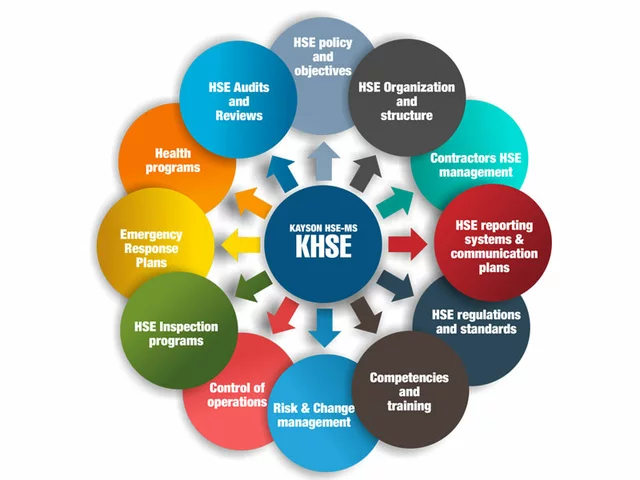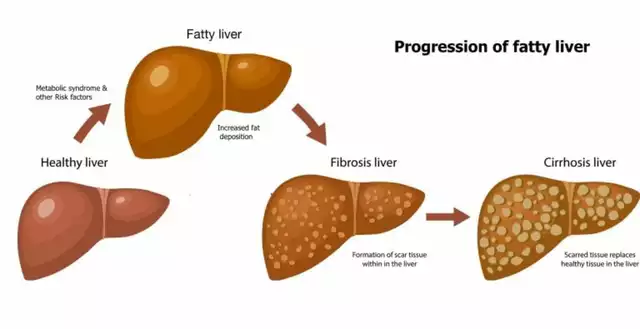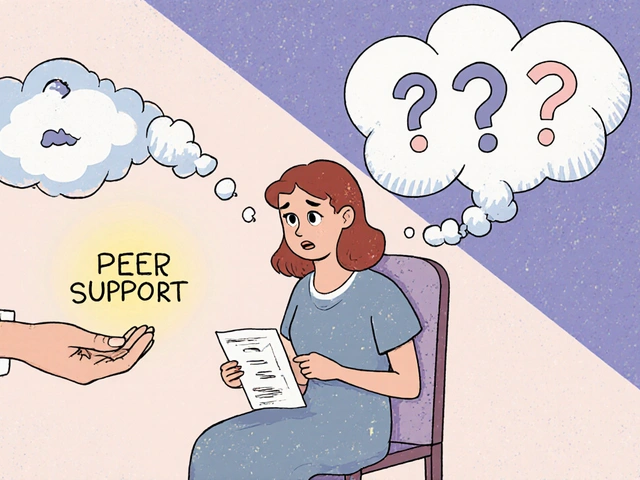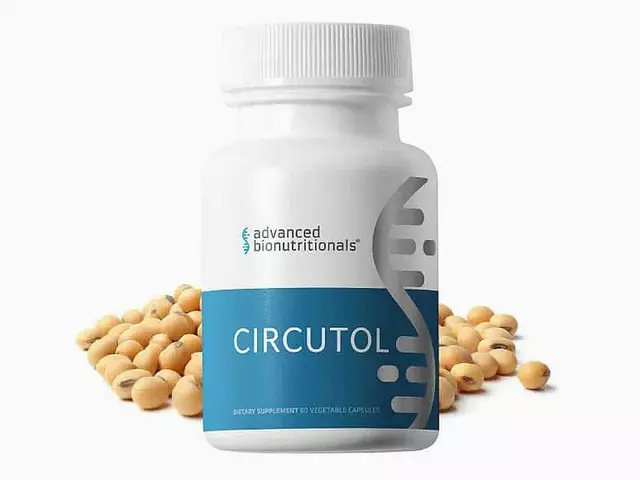
Anxiety Medication Selector
Step 1: Select Your Primary Symptom Type
Step 2: How Important Is Fast Relief?
Step 3: Side Effect Tolerance
Buspirone is a non‑benzodiazepine anxiolytic that targets serotonin receptors (5‑HT1A) to reduce generalized anxiety disorder (GAD) symptoms. Unlike sedating benzos, it has a slow onset (1‑2 weeks) and a low risk of dependence, making it a popular first‑line option for people who want medication without the crash.
Key Takeaways
- Buspirone works by modulating serotonin, not GABA, so it doesn't cause heavy sedation.
- Typical alternatives include benzodiazepines, SSRIs, SNRIs, beta‑blockers, and antihistamines.
- Onset, half‑life, side‑effect profile, and abuse potential differ widely across classes.
- Choosing the right drug hinges on symptom severity, co‑existing conditions, and personal tolerance for side effects.
- Non‑pharmacologic options like Cognitive Behavioral Therapy can augment or replace meds for many patients.
How Buspirone Works - The Pharmacology Basics
Buspirone acts as a partial agonist at the brain’s 5‑HT1A receptors, gently dampening the panic circuitry. This mechanism explains why it helps chronic worry without the rapid calming effect seen in GABA‑targeting drugs. The usual dose starts at 5mg twice daily, titrating up to 30mg per day based on response.
Key attributes of Buspirone:
- Class: Azapirone anxiolytic
- Onset: 1-2weeks (steady‑state)
- Half‑life: ~2-3hours (active metabolites last longer)
- Metabolism: Liver (CYP3A4)
- Pregnancy Category: C (use if benefits outweigh risks)
Major Alternatives - Quick Reference
| Medication | Drug Class | Onset of Action | Typical Side Effects | Abuse Potential |
|---|---|---|---|---|
| Buspirone | Azapirone | 1‑2weeks | Dizziness, nausea, headaches | Low |
| Diazepam (Valium) | Benzodiazepine | 30‑60minutes | Sedation, memory impairment, tolerance | High |
| Sertraline (Zoloft) | SSRI | 2‑4weeks | GI upset, sexual dysfunction, insomnia | None |
| Venlafaxine (Effexor) | SNRI | 1‑2weeks | Hypertension, nausea, sweating | None |
| Propranolol | Beta‑blocker | 30‑60minutes | Bradycardia, fatigue, cold extremities | None |
| Hydroxyzine | \nFirst‑generation antihistamine | 15‑30minutes | Dry mouth, drowsiness, QT prolongation | Low |

Deep Dive into Each Alternative
Diazepam - Classic Benzodiazepine
Diazepam enhances GABA activity, giving rapid relief for acute panic attacks. Its half‑life ranges from 20‑70hours, so it sticks around long after the dose. This long tail can cause daytime drowsiness and a nasty withdrawal if stopped abruptly. Ideal for short‑term rescue but not for chronic daily use.
Sertraline - The SSRI Standard
SSRIs boost serotonin by blocking re‑uptake. They’re the go‑to for GAD, social anxiety, and panic disorder. The downside? Sexual side effects hit up to 40% of users, and the initial weeks can feel worse before getting better. No dependence risk, making them safe for long‑term therapy.
Venlafaxine - Dual‑Action SNRI
Venlafaxine hits both serotonin and norepinephrine, which can help patients who don’t fully respond to an SSRI. Blood pressure spikes are a concern at doses above 225mg, so regular monitoring is a must. Onset is similar to SSRIs, with a slightly higher activation effect (some patients report feeling more jittery).
Propranolol - Beta‑Blocker for Performance Anxiety
Propranolol blocks adrenaline receptors, quieting the physical symptoms of anxiety-rapid heart, trembling hands. It doesn’t change the mental worry, so it’s best for situational anxiety like public speaking or test anxiety. Because it lowers blood pressure, it’s contraindicated in asthma and certain heart conditions.
Hydroxyzine - Antihistamine with Calm‑Down Power
Hydroxyzine is an H1 blocker that also depresses central nervous system activity. It works fast (within minutes) and is often used when a short course of sedative is needed without the addiction risk of benzos. The most common complaint is dry mouth and a lingering “hangover” feeling the next day.
Cognitive Behavioral Therapy - Non‑Drug Front‑Runner
CBT teaches patients to reframe anxious thoughts and develop coping skills. Meta‑analyses show effect sizes comparable to medication for mild‑to‑moderate GAD. While it requires time and a trained therapist, the benefits persist long after sessions end, and there are no side effects.
How to Choose the Right Option - Decision Guide
When you sit down with a prescriber, consider these three axes:
- Speed vs. Sustainability - Need fast relief (benzodiazepine, hydroxyzine) or a steady long‑term solution (SSRI, SNRI, Buspirone)?
- Side‑Effect Tolerance - Sedation, sexual dysfunction, weight change, cardiovascular effects. List your deal‑breakers.
- Abuse & Dependence Risk - If you have a history of substance misuse, steer clear of benzos and high‑dose propranolol.
Putting those together yields a simple matrix:
- Quick “panic” spikes → Diazepam or Hydroxyzine
- Chronic worry with low side‑effect tolerance → Buspirone
- Broad anxiety spectrum, no sedation need → Sertraline or Venlafaxine
- Performance‑only anxiety → Propranolol
- Prefer non‑drug route → Cognitive Behavioral Therapy
Practical Tips & Safety Checks
Start low, go slow. Most guidelines advise beginning Buspirone at 5mg twice daily, then increasing weekly. This minimizes dizziness and nausea.
Watch for drug interactions: Buspirone is metabolised by CYP3A4, so avoid strong inhibitors like ketoconazole or grapefruit juice.
Pregnant or nursing patients should discuss risks; while data are limited, many clinicians switch to an SSRI in the third trimester.
Never abruptly stop a benzodiazepine; taper over weeks under medical supervision to avoid seizures.
For beta‑blockers, get a baseline heart rate and blood pressure, especially if you have asthma.
Related Concepts and Next Steps
Beyond the meds listed, you might explore:
- “Switching strategies” - how to transition from a benzodiazepine to Buspirone safely.
- Adjunctive use of Gabapentin for mixed anxiety‑pain syndromes.
- Mind‑body practices such as mindfulness meditation, which can boost CBT outcomes.
Each of these topics forms a logical next article in the anxiety‑treatment knowledge cluster.

Frequently Asked Questions
How quickly does Buspirone start working?
Most patients notice a mild reduction in worry after 1‑2 weeks, with full therapeutic effect emerging around 4 weeks. It’s not a “quick‑fix” like benzos.
Can I take Buspirone with an SSRI?
Yes, combining Buspirone with an SSRI is common for treatment‑resistant GAD. Doctors monitor for serotonin syndrome, but the risk is low at typical doses.
Is Buspirone addictive?
Addiction potential is considered negligible. Physical dependence is rare, and tapering is usually not required unless the dose is very high.
What are the main side effects of Buspirone?
Common complaints include dizziness, light‑headedness, nausea, and mild headache. Most side effects fade after the first few weeks.
When should I consider switching from a benzodiazepine to Buspirone?
If you’ve used a benzo for longer than 4-6 weeks, notice tolerance, or want to avoid dependence, discuss a gradual taper and start Buspirone concurrently. A 2‑week overlap helps prevent rebound anxiety.










Honestly, the whole Buspirone vs benzo debate feels like a snobbery showdown at a pharmaco‑elite brunch. While the pros love the non‑sedating vibe, the cons are still whining about the two‑week lag – as if patience is a rare commodity in our instant‑fix culture. But hey, if you can stomach a bit of dizziness and nausea, you’ll avoid the classic crash that comes with GABA‑boosters. It’s basically the artisanal coffee of anxiolytics – takes time to brew, but it won’t leave you jittery.
Totally agree, that sums it up.
When it comes to picking an anxiety med, think of it like choosing a playlist. If you need that immediate head‑bang energy for a panic attack, benzos or hydroxyzine are your heavy‑metal tracks – they hit fast but can leave you hungover. For the background chill vibes that keep the brain relaxed over weeks, Buspirone is more like lo‑fi beats, easing in without making you want to nap. The SSRI route is a bit of an indie‑rock album; it builds up, sometimes sneaks in annoying side‑effects like those pesky sexual bugs, but sticks around for the long haul. And don’t forget non‑drug options – CBT is basically the acoustic set that hones your own rhythm. Mix and match wisely, and you’ll find a soundtrack that suits your daily grind.
While the previous comment paints a fun picture, let’s correct a factual slip: Buspirone’s half‑life is around 2‑3 hours, not days, and its active metabolite extends the effect. Also, the term “crash” is more appropriate for benzodiazepine withdrawal rather than normal use. Precision matters when discussing pharmacodynamics.
Hey folks! 😊 If you’re juggling side‑effects, here’s a quick tip: taking Buspirone with food can smooth out that nausea, and staying hydrated helps with the occasional dizziness. Also, remember that grapefruit juice is a no‑go; it can boost levels too much. Keep those little tweaks in mind and the ride’ll be smoother! 🌟
Sure, because everyone loves a good side‑effect cocktail. 🙄 Take it with food, stay hydrated – next you’ll be writing a novel about how water cured anxiety. Maybe try a therapist before you become a pharmacist’s test subject.
Let’s get pumped about taking charge of our mental health! 🚀 Starting low and going slow with Buspirone isn’t just a mantra; it’s science. Your body will thank you for the gentle titration, and you’ll avoid those wobbly side‑effects that can derail progress. Keep a symptom diary, celebrate tiny wins, and remember that consistency beats intensity any day.
Exactly! Consistency is the foundation. Also, if you’re pairing Buspirone with an SSRI, monitor for serotonin syndrome – that’s the aggressive part of the plan you don’t want to miss. Stay proactive and keep the communication open with your prescriber.
Alright, let’s dissect this whole Buspirone saga with the surgical precision of a seasoned guru. First, the allure of low abuse potential is like advertising a sugar‑free cake – it sounds healthy, but you still have to eat it in moderation, otherwise you’ll end up with “cognitive crumbs” of dizziness and nausea that linger longer than an annoying tagline. Second, the two‑week onset isn’t just a waiting period; it’s a psychological treadmill where patients often feel they’re stuck in a limbo of “almost there” while the world expects instant miracles. Third, the interaction with CYP3A4 means anyone sipping grapefruit juice is essentially handing the drug a backstage pass to the VIP lounge, skyrocketing serum levels and flirting with toxicity – a relationship no one signed up for. Fourth, while the side‑effect profile appears mild, the real kicker is the “head‑ache” and “light‑headedness” that can masquerade as anxiety itself, creating a feedback loop that’s as tangled as a knot in a shoelace. Fifth, the comparison chart that pits Buspirone against benzos, SSRIs, and beta‑blockers is a good visual, yet it glosses over the nuance that many patients end up on poly‑pharmacy regimens, mixing Buspirone with SSRIs and sometimes even low‑dose benzos for breakthrough spikes – a cocktail that can be more hazardous than a Sunday hangover if not meticulously managed. Sixth, the claim of negligible dependence is technically sound, but abrupt cessation at high doses can still provoke rebound anxiety, which, while not withdrawal in the classic sense, feels just as alarming to the patient. Seventh, the advice to start at 5 mg twice daily and titrate up is spot‑on, but the real world sees many prescribers either jump straight to 10 mg or linger too long at sub‑therapeutic levels, both of which undermine efficacy. Eighth, let’s not forget the socioeconomic angle – Buspirone isn’t always covered by insurance, making it a pricey option for some, contrary to the “budget‑friendly” vibe some articles try to spin. Ninth, the discussion around pregnancy is vague; while it’s category C, the risk–benefit analysis is a minefield that requires individualized counseling – not a blanket statement. Tenth, the article’s mention of CBT as a non‑drug counterpart is apt, but it underplays the synergy where CBT can actually amplify Buspirone’s effect by re‑wiring anxiety pathways, making the medication less of a “stand‑alone” player. Eleventh, the practical tip about avoiding strong CYP3A4 inhibitors is crucial, yet the typical patient is often unaware of over‑the‑counter meds like certain antihistamines that also play in that enzymatic sandbox. Twelfth, the emphasis on “no sedation” is a double‑edged sword – while many cherish being alert, some actually benefit from mild sedation that helps them sleep, a nuance lost in the binary framing. Thirteenth, the comparative half‑life data is accurate but leaves out the fact that active metabolites of Buspirone linger, subtly extending its functional duration beyond the parent drug’s half‑life, a detail that could explain lingering side‑effects. Fourteenth, the recommendation to monitor heart rate with beta‑blockers is solid, yet the article fails to mention that propranolol’s lipophilicity can cross the blood‑brain barrier, impacting mood in ways that some patients might misinterpret as anxiety worsening. Finally, the overarching narrative should remind readers that no single medication is a silver bullet; the best outcomes arise from a personalized blend of pharmacology, therapy, lifestyle tweaks, and continuous dialogue with healthcare providers. In short, Buspirone is a valuable tool, but like any tool, its utility depends on how and when you wield it.
Wow, that was a massive wall of text. Honestly, reading all those sentences felt like watching paint dry. If you want a quick takeaway: Buspirone is okay, but it’s slow and can make you feel a little off. That’s about it.
Hey everyone! 🌍 I just wanted to add a broader perspective here. While the pharmacological details are crucial, we also need to consider cultural attitudes toward anxiety treatment. In many communities, especially among older generations, there’s a stigma attached to taking any kind of medication for mental health. This can lead people to either avoid treatment altogether or rely heavily on short‑term “quick‑fix” options like benzodiazepines, even though they carry higher risks. On the flip side, younger individuals, who are more accustomed to discussing mental health openly, might gravitate toward non‑pharmacologic approaches such as CBT, mindfulness, or even digital therapeutic apps. These tools can be incredibly effective when combined with medication, creating a synergistic effect that maximizes therapeutic benefit while minimizing side‑effects. Moreover, let’s not overlook the role of lifestyle factors – regular exercise, proper sleep hygiene, and nutrition can substantially influence anxiety levels and, in many cases, reduce the required dosage of medication. It’s also essential for clinicians to personalize the treatment plan, taking into account each patient’s unique genetic makeup, co‑existing conditions, and personal preferences. By fostering an environment of open communication and shared decision‑making, we can empower patients to take ownership of their mental health journey, leading to better adherence and overall outcomes. 🌟
Great points. Patients should be briefed on titration steps and possible side‑effects; clear guidance can improve compliance.
If anyone’s wondering how to manage the occasional nausea from Buspirone, I’ve found taking it with a modest snack – like a banana or a handful of crackers – really helps. Also, keep an eye on any new meds you add to the mix, especially over‑the‑counter antihistamines, as they can amplify sedation. Staying proactive and discussing these details with your prescriber can make the whole experience smoother.
Okay, but let’s not pretend that all the “alternative” meds are flawless. Every drug has trade‑offs, and you can’t just pick the one that sounds least scary without weighing the real‑world side‑effects.
Absolutely, each option comes with its own set of pros and cons. It's important to have an open conversation with your doctor about what fits best for your lifestyle.